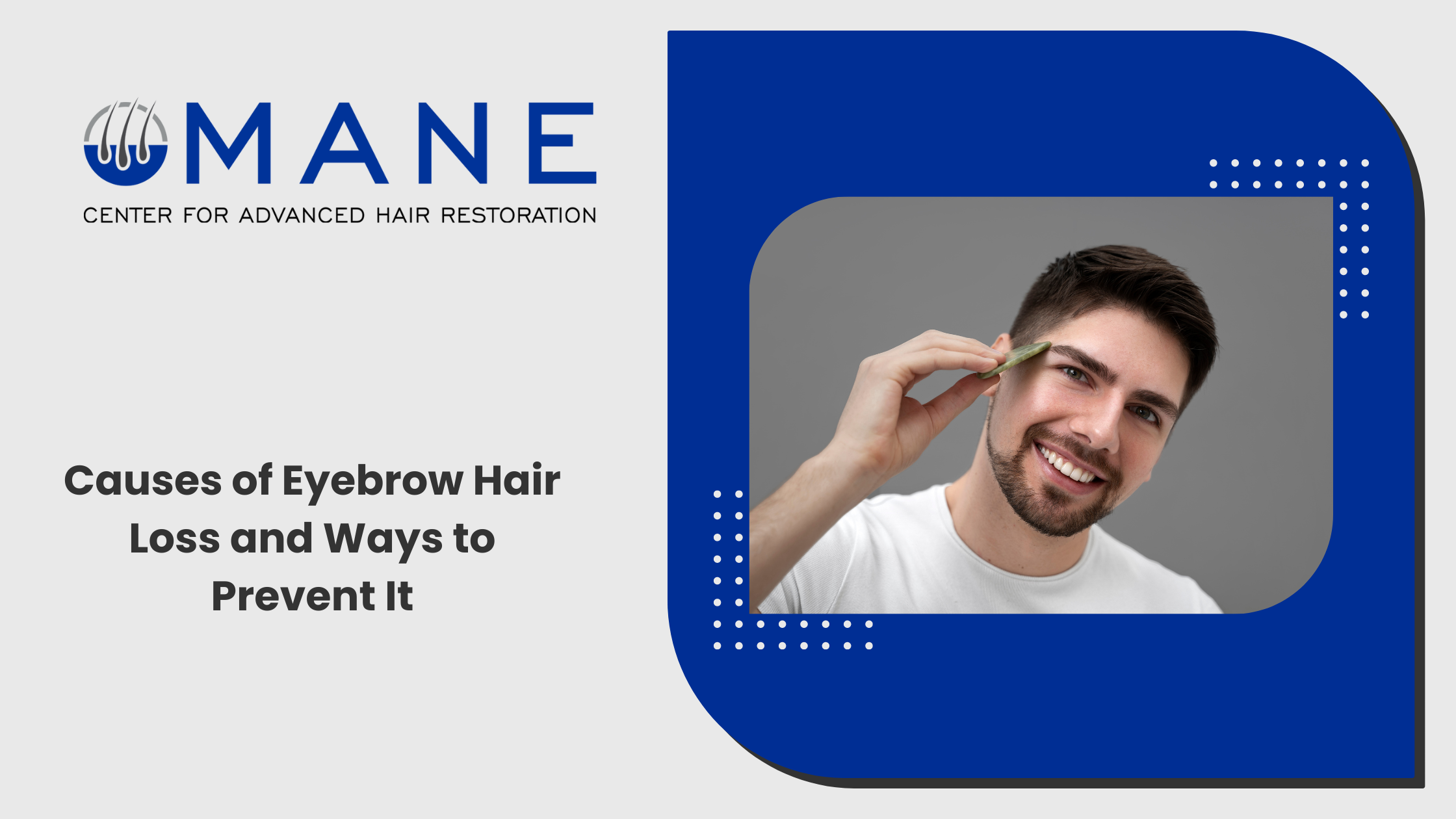


Eyebrow madarosis, also known as eyebrow hair loss, is a medical condition in which you start to experience hair thinning or hair loss on the eyebrow and surrounding area. It is a very common condition among males and females. The most common symptoms of eyebrow hair loss include thinning, itchiness, and redness on the eyebrow or the eyelashes. Eyebrows and eyelashes are important facial features, and losing hair in those areas can negatively affect your appearance. Studies show that although the treatment for eyebrow hair loss is limited, proper diagnosis can help with your outcome Here’s everything you need to know about eyebrow thinning and the best eyebrow hair treatment in Chevy Chase, MD.
Eyebrow hair loss can happen for several reasons, such as skin infection, chronic skin conditions, hormonal imbalance, or an overactive immune system. Besides these, nutritional deficiencies, physical injury, or stress can also cause eyebrow hair loss. Let us look closer at some of the underlying causes of eyebrow hair loss.
Alopecia is a chronic condition in which the immune system works against nature and attacks its cells. One of the most common symptoms of alopecia is complete hair loss, as it targets hair follicles on the body, including the scalp, eyebrows, and limbs. If you suffer from alopecia, you may have started witnessing hair loss. The underlying reason for alopecia is still unknown, but medical experts and dermatologists are looking for the reasons that trigger it in the first place.
Nutritional values such as carbohydrates, fats, vitamins, minerals, and calcium are important for the growth of the human body. They are equally important for hair growth, and nutritional deficiencies can lead to hair loss. Therefore, everyone needs to ensure that they maintain their nutritional content. Some important nutrients for healthy hair include biotin, vitamins C, E, B-12, D, iron, and omega-3.
Changes in the thyroid, such as hyperthyroidism or hypothyroidism, can also lead to hair loss. The thyroid is a butterfly-shaped gland located beneath the neck. It helps control functions, such as metabolism. An imbalance in thyroid health can negatively influence hair and its growth, as it produces less melanin.
The skin’s health determines the growth rate of hair. Therefore, you may have hair loss if you have any skin ailments. Common skin ailments include itchiness, flaking skin, rashes, skin inflammation, dry skin, and redness in the surrounding area of the eyebrows. Besides, some serious skin ailments, including dermatitis and psoriasis.
Certain medical treatments can also cause hair loss, including the eyebrows, as a potential side effect. Such medical treatments include:
See Also: Experiencing Eyebrow Thinning? Here’s What You Need to Know
People may experience complete or partial eyebrow hair loss. Common eyebrow hair loss symptoms may include
Yes, lost hair on the eyebrow or the eyelashes may grow back unless you have an underlying medical condition causing your hair loss. Regrowth may take four to six months, depending upon the eyebrow thinning treatment. Hair growth has three phases. The three phases of hair growth include:
Hair length depends on the duration of the anagen phase. Eyebrows grow slower than scalp hair and have a much shorter anagen phase. However, growth is determined by the condition of the person and the causes of hair loss. Therefore, it may vary.
Identifying the cause of the hair loss is the first step for an eyebrow thinning treatment or hair loss treatment. The following sections discuss common medications for eyebrow hair loss.
Topical bimatoprost is a topical solution approved by the Food and Drug Administration (FDA) for helping eyebrow regrowth. Topical bimatoprost can be applied directly to the affected area. Applying bimatoprost once per day can bring very promising results. Side effects of topical bimatoprost can include dermatitis, hyperpigmentation, and itchiness.
Applying corticosteroids in the form of creams or ointments can slow hair loss. According to the National Alopecia Areata Foundation, corticosteroids improve regrowth by 25% when using strong corticosteroids. People can also get corticosteroid injections to stimulate hair growth. Doctors often administer these injections for hair loss treatment. The NAAF says they generally see hair growth within four weeks of this treatment.
People often use minoxidil and corticosteroids for eyebrow thinning treatment or hair loss treatment. It is minimally effective when one applies 2- 5% minoxidil solution twice daily. It provides better results when combined with corticosteroids.
Another option is microblading. Although this treatment does not enable hair regrowth, it can give the eyebrows a complete appearance.
The right time to visit the doctor for eyebrow thinning or hair loss treatment is when you notice a sudden or unexplained hair loss in your eyebrows or eyelashes. Doctors can diagnose the cause, test for potential health conditions, and offer advice about the best treatments for hair regrowth. For that, visit the best eyebrow hair treatment in Chevy Chase, MD. See Also: What to Expect from an Eyebrow Transplant
Doctors can use a range of tests for eyebrow thinning. They will first ask about symptoms, duration, and any family history. They may also ask about diet and other factors. The doctor will closely examine the eyebrow hair and help diagnose the underlying cause of it. The hair's exact shape can also help determine the cause of eyebrow hair loss. They may also use a blood test for the thyroid, which will show any imbalances that could be causing eyebrow loss.
Eyebrow hair loss is a common and non-serious medical condition where a person experiences partial or complete hair loss on the eyebrow. There are many causes for this condition. But proper medication and medical assistance can help in hair regrowth. So, take your first step with Mane Center for Advanced Hair Restoration in Chevy Chase, MD. Advanced technology and experience make us the most trusted and first choice for eyebrow hair loss treatments. Book your consultation or call us today.